Pelican makes the most popular hard-sided crush-proof cases for photographers, but the vast number of options in their catalog can make it a daunting task to pick the best option. In this gear guide, I’ll walk you through my top Pelican case picks for traveling photographers, including the best Pelican carry-on case for photography gear and the best legally sized checked luggage Pelican case. With these recommendations, you’ll have everything you need to protect your cameras, lenses, and accessories from bumps and knocks while on the road.
Table of Contents
Best Pelican Case for Checked Luggage Photography Gear
Most airlines allow checked luggage to have maximum linear dimensions (length+width+height) of 62 inches. Remember to check with your airline before you fly. Still, unless you regularly fly with an airline that has a non-standard maximum dimension or only uses small airplanes, this 62-inch figure is the important one to consider when choosing a Pelican case to use as checked luggage.
Pelican cases are not cheap, and most people don’t have the budget to maintain a large stock of different sizes. Suppose you plan to fly regularly with photography equipment as checked luggage. In that case, the best thing for most people to do is buy the largest Pelican case allowed within the standard 62-inch regulations. It is almost always better to have too much room than not enough. Any spare room can be quickly filled with foam padding or bubble wrap.
As with the carry-on compatible Pelican cases, I see no reason to look at the old Pelican Protector Cases or Pelican Storm cases. The lighter-weight Pelican Air cases offer more than enough protection, and in recent years, the lineup has dramatically expanded to include several excellent options for high-capacity checked luggage.
The Main Contenders
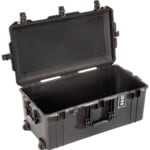




The Pelican 1615 AIR has been purposely designed to meet the 62-inch maximum dimension exactly. At this point, no pun intended; you might think this is case closed. However, after examining the other options in the AIR case lineup, the 1615 AIR is not the Pelican case I decided to purchase. First, let’s look at the specifications, and then I’ll tell you why I chose other options for my primary and secondary Pelican photography cases for checked-bag travel.
| Pelican Model | Exterior Dimension (L×W×D) | Interior Dimension (L×W×D) | Linear Dimension | Empty Weight | Volume | Volume to Weight Ratio lb/ft³ | Check Price |
|---|---|---|---|---|---|---|---|
| 1615 AIR | 32.58 x 18.40 x 11.02 in | 29.59 x 15.50 x 9.38 in | 62 | 14.06 lbs (6.4 kg) | 2.49 ft³ | 5.65 | Pelican / B&H / Amazon / Adorama / WEX |
| 1626 AIR | 31.12 x 17.05 x 13.33 in | 28.14 x 14.10 x 11.72 in | 61.5 in | 14.65 lbs (6.6 kg) | 2.69 ft³ | 6.28 | Pelican / B&H / Amazon / Adorama |
| 1637 AIR | 26.61 x 20.65 x 14.87 in | 23.43 x 17.55 x 13.25 in | 62.13 in | 15.20 lbs (6.9 kg) | 3.15 ft³ | 4.83 | Pelican / B&H / Amazon / Adorama |
| 1606 AIR | 27.42 x 15.13 x 11.83 in | 24.54 x 12.30 x 10.22 in | 54.38 in | 12.45 lbs (5.6 kg) | 1.79 ft³ | 6.96 | Pelican / B&H / Amazon / Adorama |
| 1595 AIR | 28.52 x 17.80 x 10.70 in | 25.60 x 15.03 x 9.00 in | 57.02 | 13.60 lbs (6.2 kg) | 2 ft³ | 6.8 | Pelican / B&H / Amazon / Adorama |
You can’t go wrong with any of these three options, but I do want to talk about some of the things you might want to consider when making your choice.
Pelican 1615 AIR
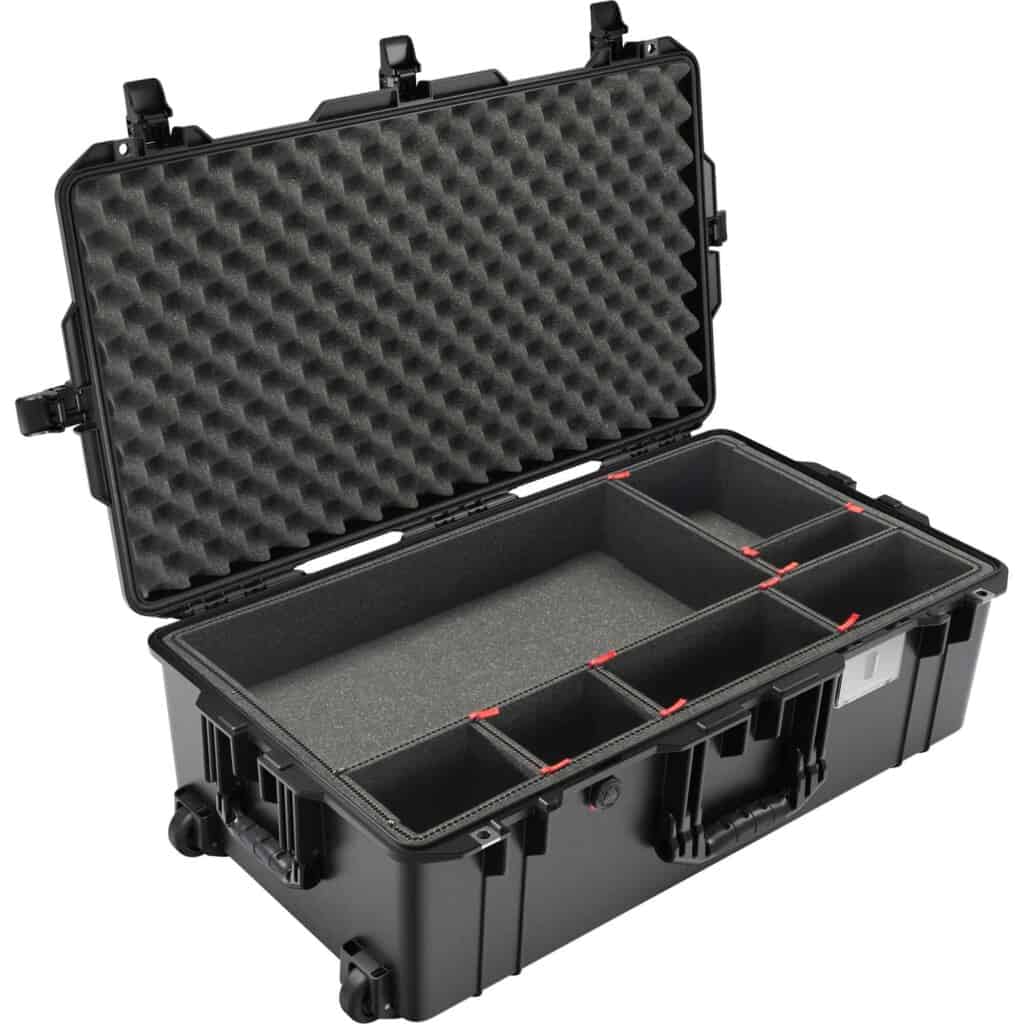
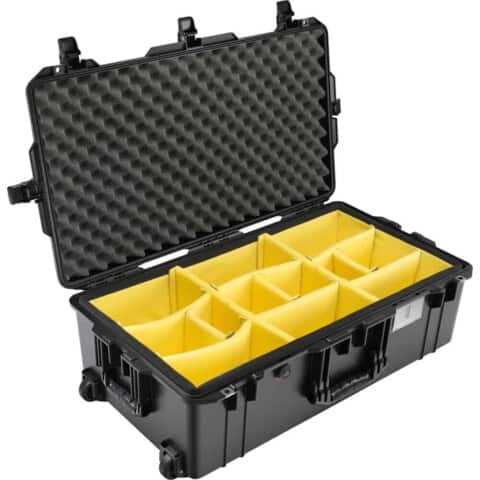
The Pelican 1615 AIR was designed to meet the 62-inch checked luggage limit exactly. This is a long case, but it is not as deep as some other options on the list. Note that the usable internal volume is less than the smaller 1626 AIR. A plus for the 1615 AIR is the availability of a bespoke, fully padded camera insert. This case is also the largest Pelican roller case with the option to be specced with Pelican’s TrekPak customizable insert system.
Pelican 1637 AIR
The Pelican 1637 AIR has a linear dimension of 62.13 inches. Technically, this is slightly over the legal 62-inch limit. However, it is such a slight margin that I would not anticipate anyone having an issue with this. Of particular note with the 1637 AIR is the impressive volume and volume-to-weight ratio. This case offers a full 0.64 cubic feet of space more than the Pelican 1615 AIR while weighing less than a pound more. By the numbers, this case provides the most efficient use of space.
Pelican 1626 AIR
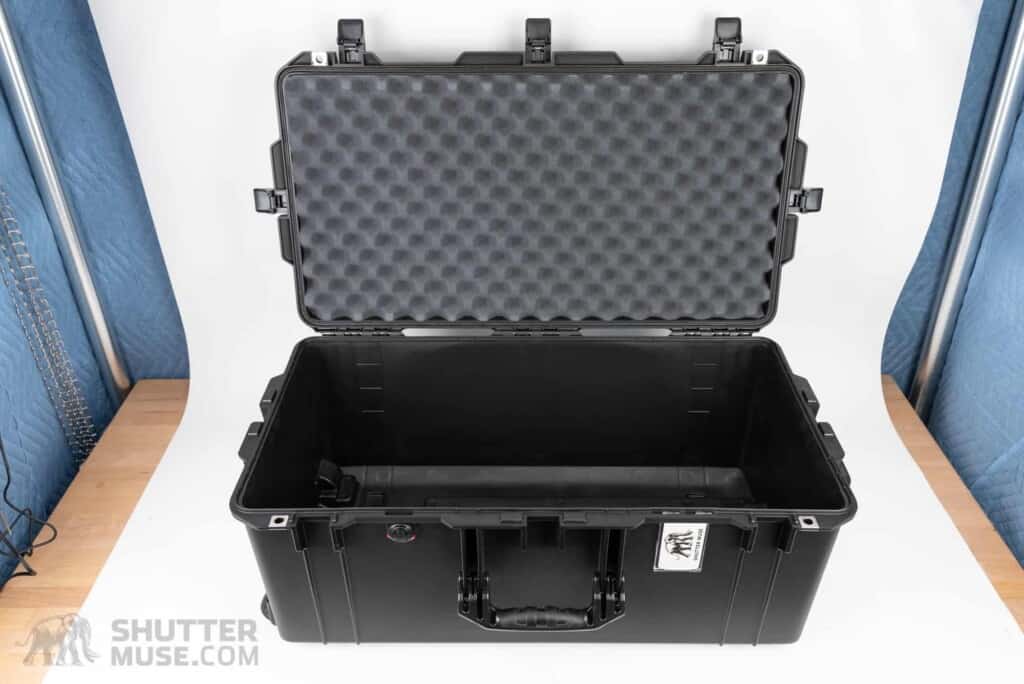

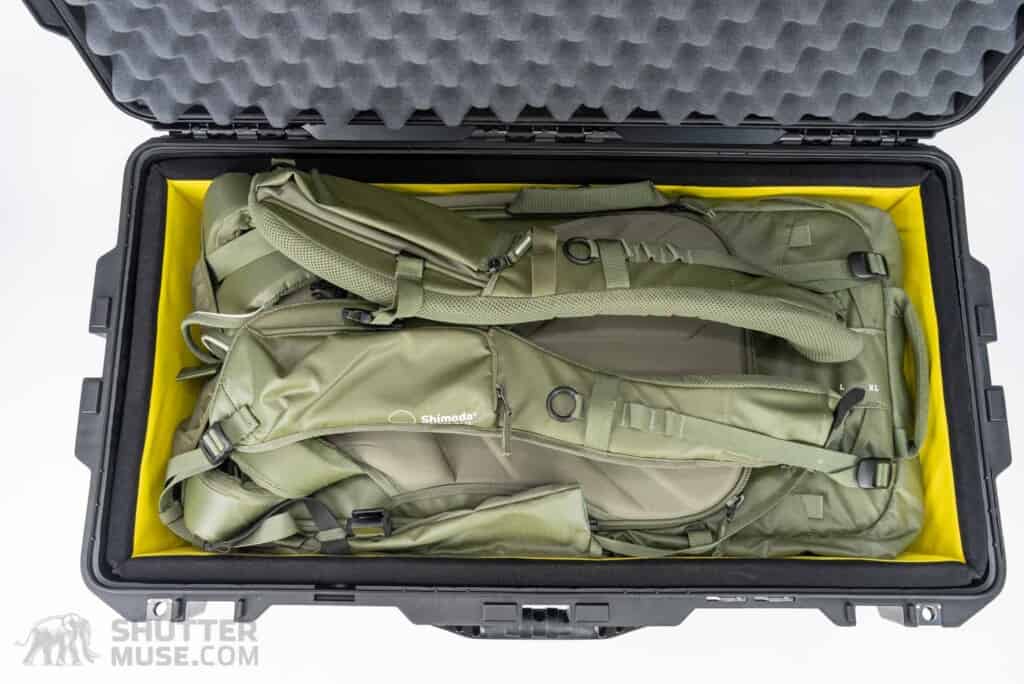
The Pelican 1626 AIR is a little smaller and lighter than the Pelican 1637; however, it is longer, which makes it a better fit for my tripods and larger camera bags. For most large photographic items, I find the shape of the 1626 AIR preferable to that of the 1615 AIR or 1637 AIR. The Shimoda Action-X 70 HD is one of the largest photography backpacks. It’s a perfect fit inside the Pelican 1626 AIR. Other compatible bags include the F-Stop Tilopa or Ajna, Gura Gear Kiboko 30L, MindShift BackLight Elite 45, or MindShift Rotation Pro 50.
Pelican 1606 AIR
The Pelican 1606 AIR doesn’t have an available yellow padded insert like the larger 1615, 1626, and 1637, nor is there a TrekPak kit for it. However, it is the perfect dimension to hold Shimoda’s DV Core Units. This is something to consider if you’re already using Shimoda’s Explore v2 or Action X v2 camera bags. It’s also the perfect size for a LensCoat 4Xpandable long lens bag.
Pelican 1595 AIR
The Pelican 1595 AIR is the second largest wheeled Pelican case available with Pelican’s TrekPak customizable insert system after the 1615 AIR. This is an excellent option if you need to pack a moderate-to-large amount of camera equipment in an organized way, i.e., without placing it in padded cases or camera bags.
My Checked Luggage Choices?
I use the Pelican 1626 AIR when I need the biggest case for checked luggage. It has the depth to swallow large camera bags and the length to accommodate my 3-Series RRS tripod. For me, the proportions of this case make it the most useful of the three largest cases (1637, 1626, 1615) for photographic equipment. When I need a checked luggage hard case that is a more manageable size, I use the Pelican 1606 AIR for its perfect fit with the Shimoda DV Core Units and the LensCoat Xpandable long lens bag.
Pelican 1626 AIR Weights
I weighted my own 1626 AIR in various configurations.
- Empty weight: 14.7lbs
- Only foam padding in the lid: 15.2lbs
- Including complete padded divider kit + lid foam: 18.76lbs
- Including only the bottom padded shell of the divider kit + lid foam: 17.76lbs
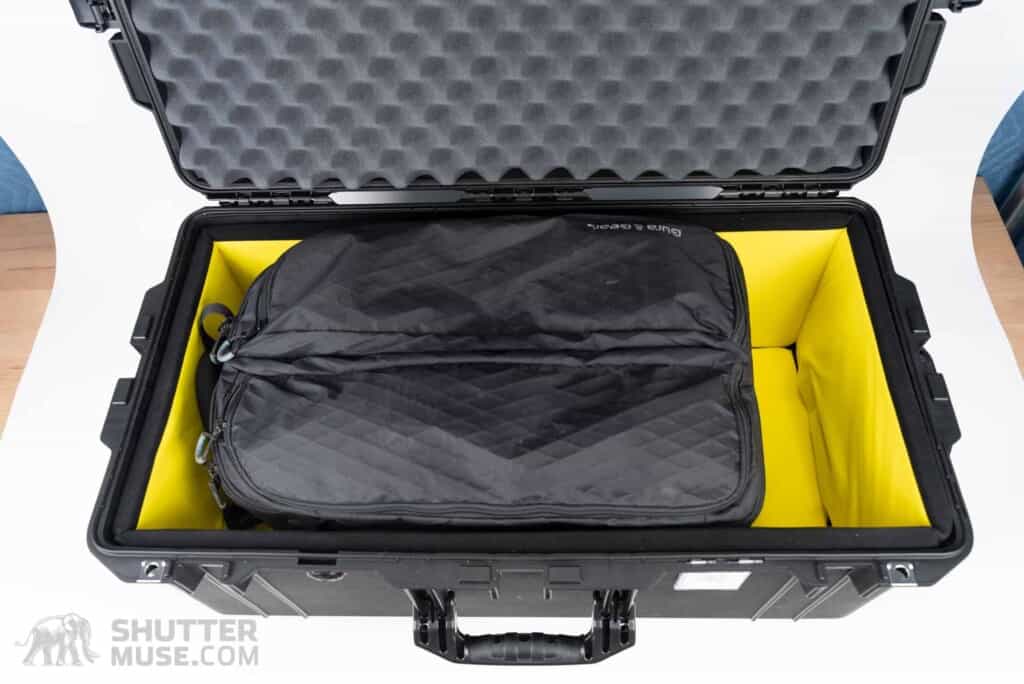
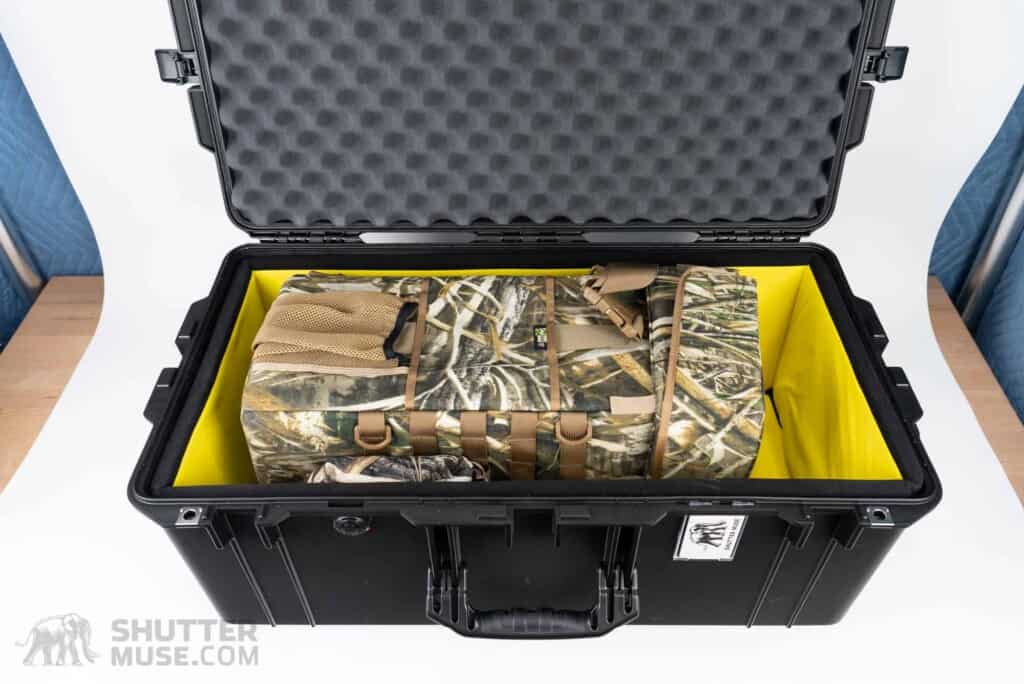
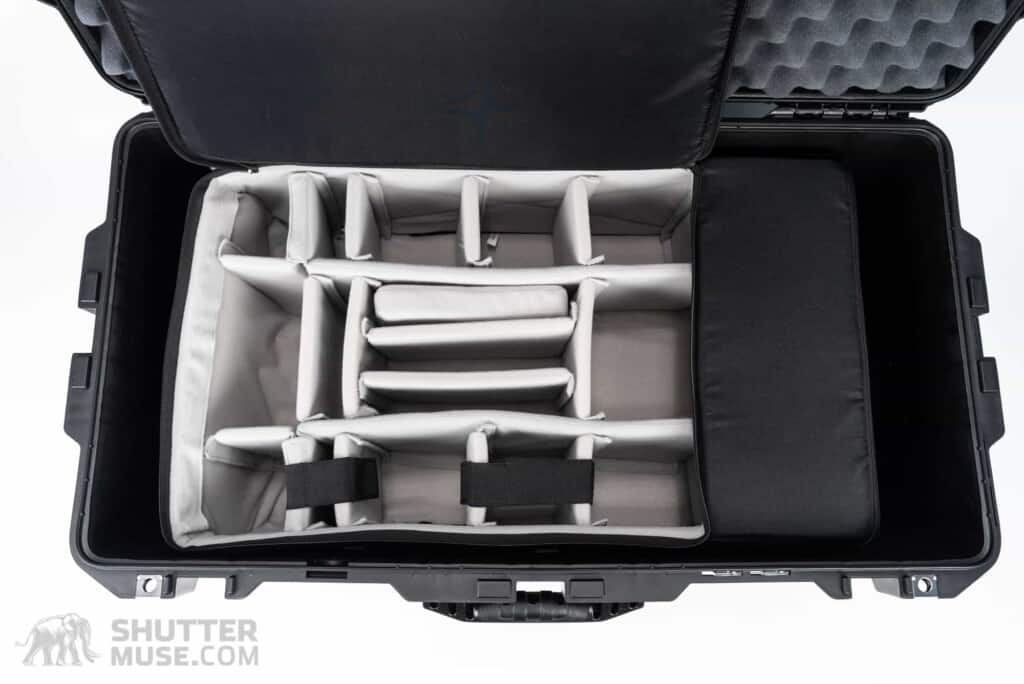

Best Pelican Cases for Drones and Smaller Photo Gear
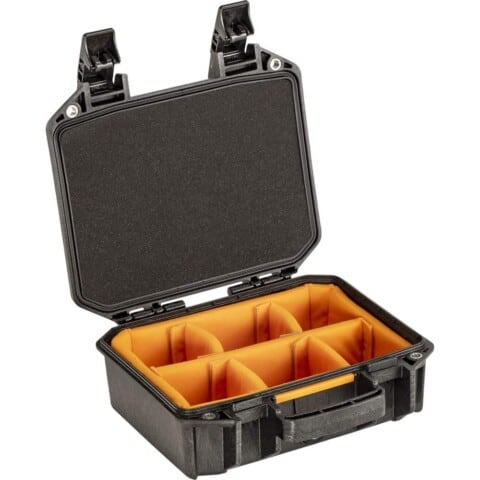





A recent addition to the Pelican case catalogue is the VAULT lineup. Initially sold as gun cases and later adapted for photography gear and drones, the VAULT cases provide protection equivalent to the Pelican Protector case lineup but at a much lower price.
| VAULT Model | Exterior Dimensions (L×W×D) | Interior Dimensions (L×W×D) | Weight | Price Check |
|---|---|---|---|---|
| V100 | 12.28 x 12.03 x 5.16″ | 11 x 8 x 4.5″ | 3.47 lb / 1.57 kg | Pelican / B&H / Amazon / Adorama |
| V200 | 15.41 x 13.08 x 6.16″ | 14 x 10 x 5.5″ | 5.05 lb / 2.29 kg | Pelican / B&H / Amazon / Adorama |
| V300 | 17.54 x 14.21 x 7.16″ | 16 x 11 x 6.5″ | 6.69 lb / 3.03 kg | Pelican / B&H / Amazon / Adorama |
| V550 | 22.42 x 17.46 x 9.16″ | 19 x 14 x 8.5″ | 10.73 lb / 4.87 kg | Pelican / B&H / Amazon / Adorama |
| V600 | 24.55 x 20.59 x 10.16″ | 21 x 17 x 9.5″ | 15.27 lb / 6.93 kg | Pelican / B&H / Amazon / Adorama |
| V525 Roller | 22 x 14 x 9″ | 19.9 x 10.6 x 7.3″ | 12.15 lb | Pelican / B&H / Amazon / Adorama |
VAULT cases are the opposite of Pelican AIR cases. These are relatively heavy cases that should not be considered for efficient air travel. However, they are affordably priced and come with an excellent set of brightly-coloured padded dividers. I own several VAULT cases and love to use them when I want to throw my drone or other smaller photo items in the trunk of my car. Portability is a strong point due to the variety of available sizes. They are also a great way to organize objects by type on your gear shelves.
How affordable are Pelican VAULT cases compared to Pelican AIR or Pelican Protector Cases? Let’s look at one example: The Pelican Vault V525 Roller comes in at $189, including the padded inserts. Size-wise, the equivalent Pelican AIR roller is the previously discussed Pelican 1535 AIR, which has a price, including padded dividers, of $309 or $340 with TrekPak dividers!
As you can see, the Pelican VAULT cases are considerably cheaper than other Pelican cases, but somehow Pelican has managed to provide an equal level of protection. If anything, their heavyweight and bulky construction make them feel even more protective than other Pelican case lines. The downside is, of course, the weight. Keeping the same example as before, the V525 roller weights 12.15 lbs, while the Pelican 1535 AIR weighs 9.98 lbs. The thickness of the case walls also lessens the internal volume compared to thinner-walled AIR cases.
While I would not want to travel with Pelican VAULT cases, I think they are a fantastic addition to the Pelican lineup and highly recommend them as options for smaller photo gear hard cases. You can’t beat the bang for buck ratio with these.
Best Pelican Case for Carry-On Luggage Photography Gear
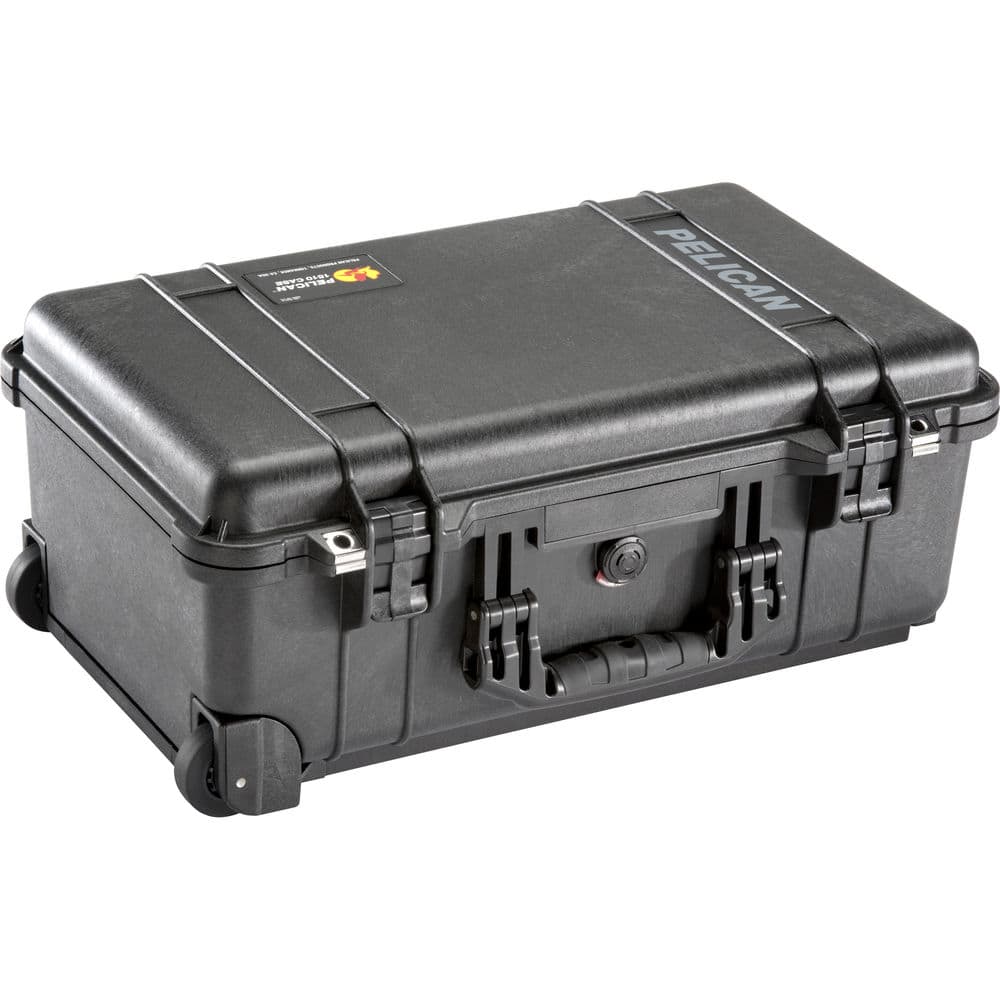

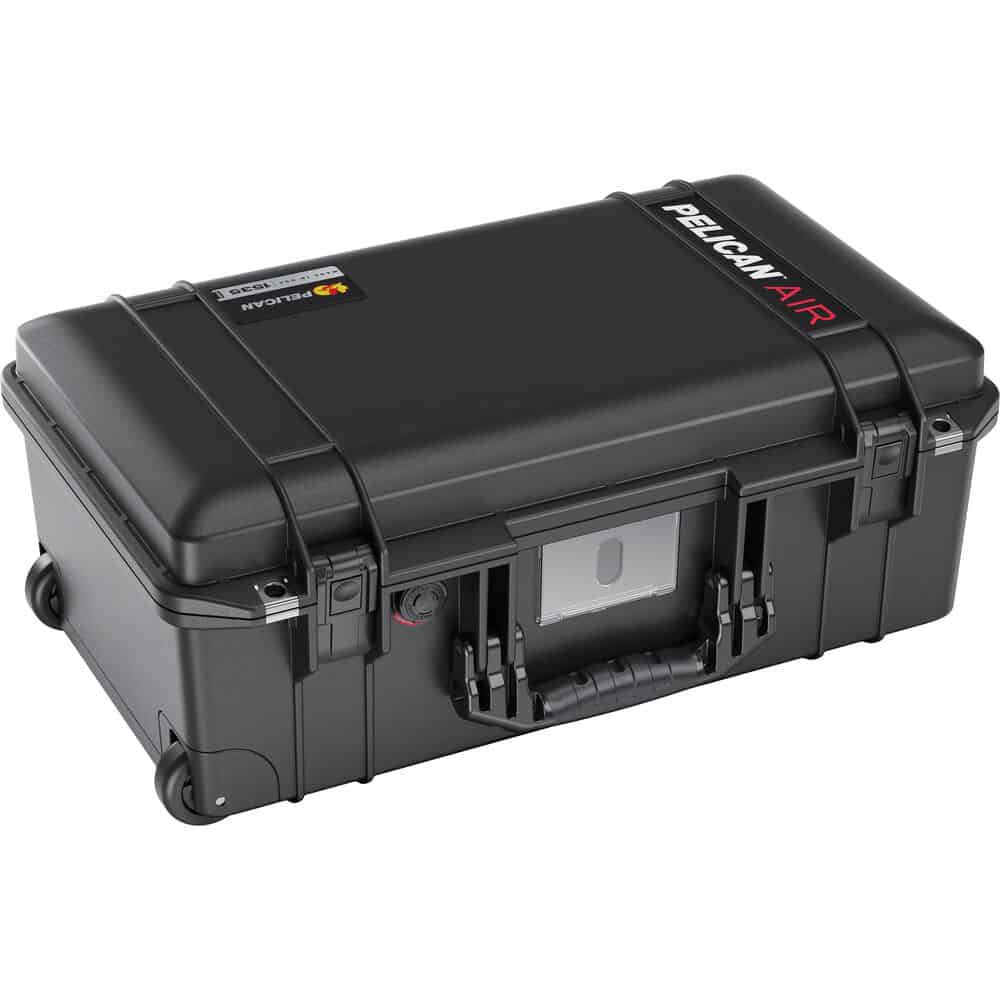
| Model | Exterior Dimensions (L×W×D) | Interior Dimensions (L×W×D) | Weight | Price Check |
|---|---|---|---|---|
| 1535 AIR | 21.96 x 13.97 x 8.98 in | 20.39 x 11.20 x 7.21 in | 8.69 lbs (3.9 kg) | Pelican / B&H / Amazon / Adorama / WEX |
| 1510 Protector | 22.00 x 13.81 x 9.00 in | 19.75 x 11.00 x 7.60 in | 11.99 lbs (5.4 kg) | Pelican / B&H / Amazon / Adorama / WEX |
| im2500 Storm | 21.70 x 14.10 x 8.90 in | 20.50 x 11.50 x 7.20 in | 11.10 lbs (5 kg) | B&H / Amazon / Adorama |
Most people think of the Pelican Protector lineup as the classic Pelican case. This made the Pelican 1510 the go-to choice for carry-on compliant rolling hard cases for many years. As airlines increasingly tightened carry-on baggage weight restrictions, Pelican developed their AIR-series cases. Using newer manufacturing techniques, the Pelican AIR cases are typically 30-40% lighter than equivalently sized Protector cases while sacrificing none of their robustness.
The Pelican 1535 AIR case should now be considered the obvious choice for a Pelican carry-on roller. Give or take a fraction of an inch here and there; it is the same size as the Pelican 1510 but 3 lbs lighter. The Pelican Storm im2500 is lighter than the 1510 but still 2.5lbs heavier than the 1535 AIR.
Not only is the 1535 AIR lighter, but it also has much improved latches and more comfortable handles. At around $210 for the empty model, it is roughly $30-$35 more expensive than the older 1510 model. In my opinion, for a rolling case that will last you most, if not all, of your career, the price difference is negligible.
Versions of the Pelican 1535
The Pelican 1535 AIR case is available in five different formats (and many colours):
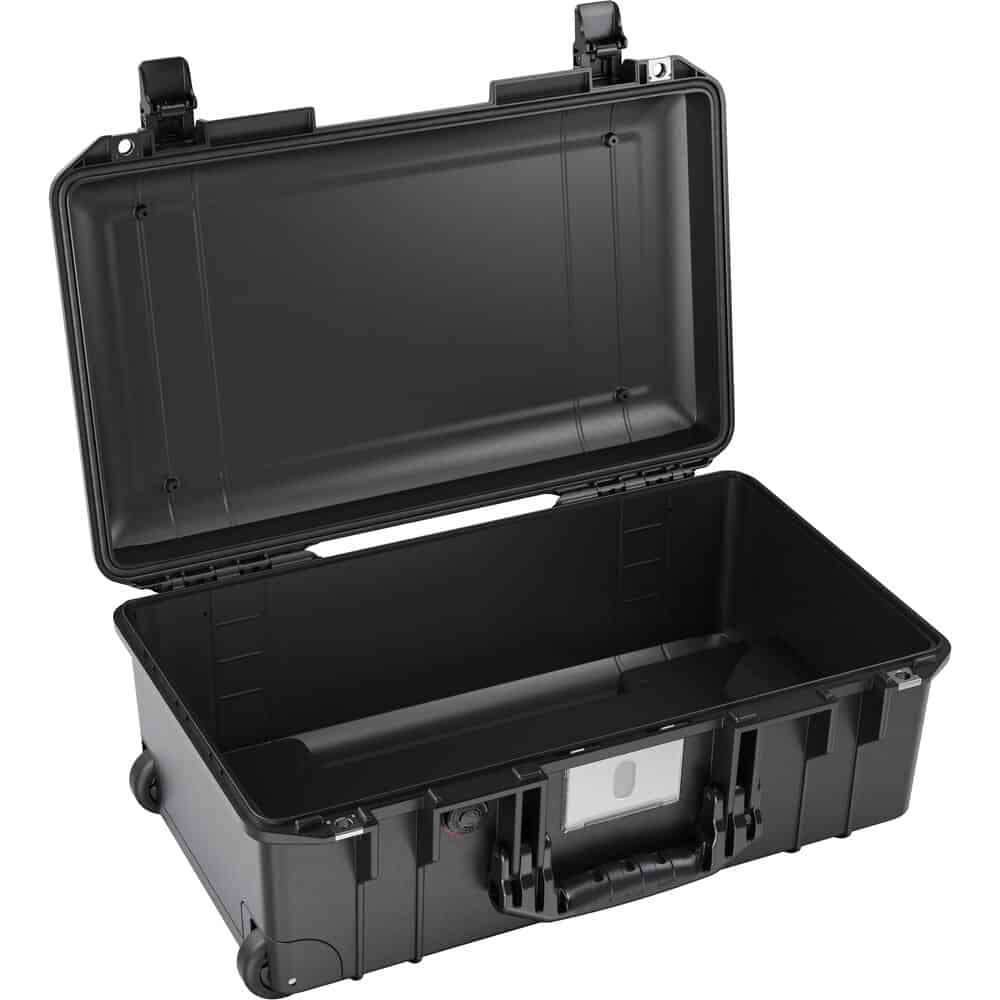
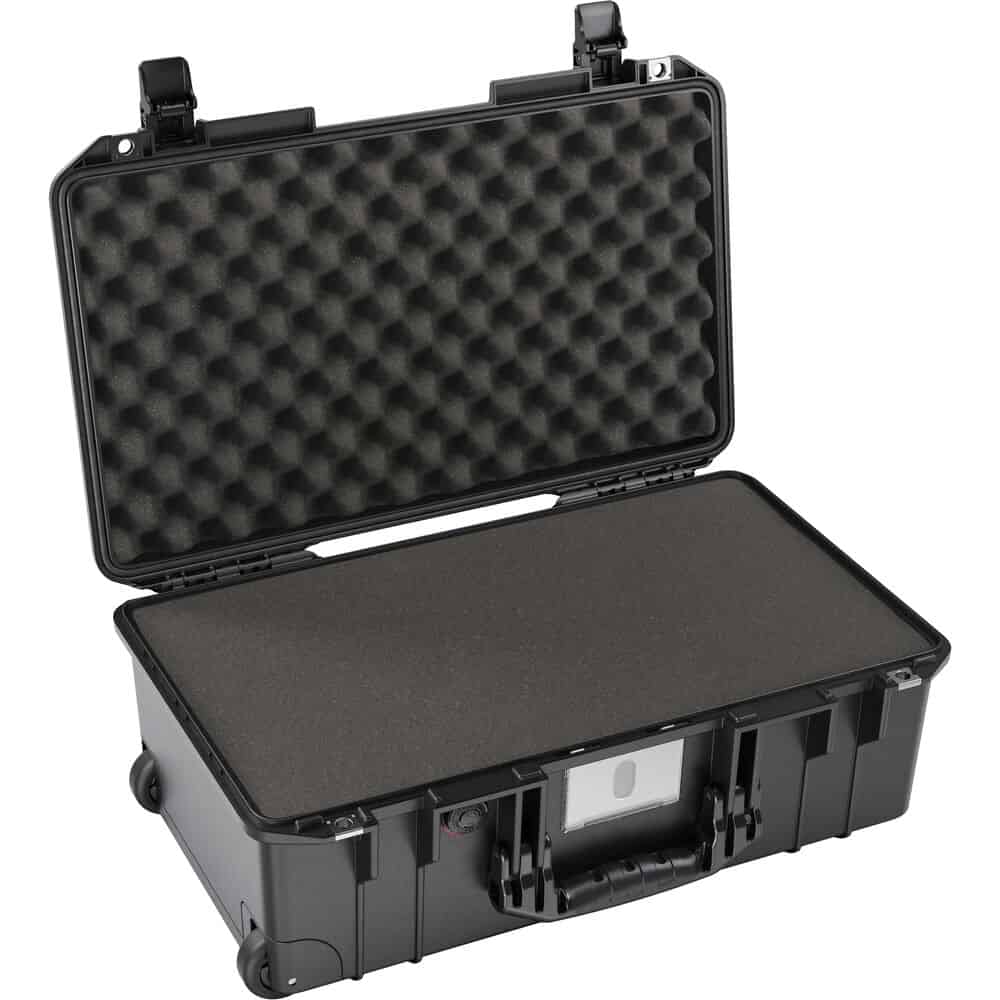
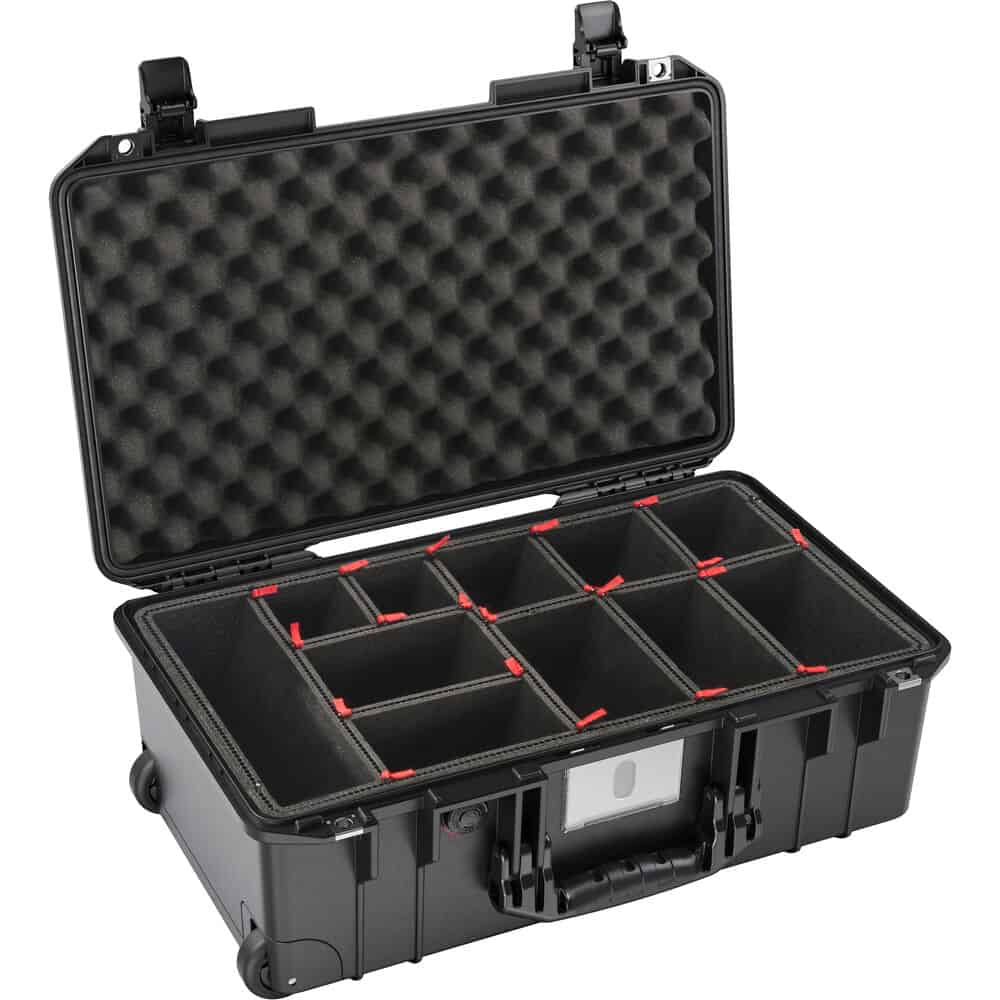
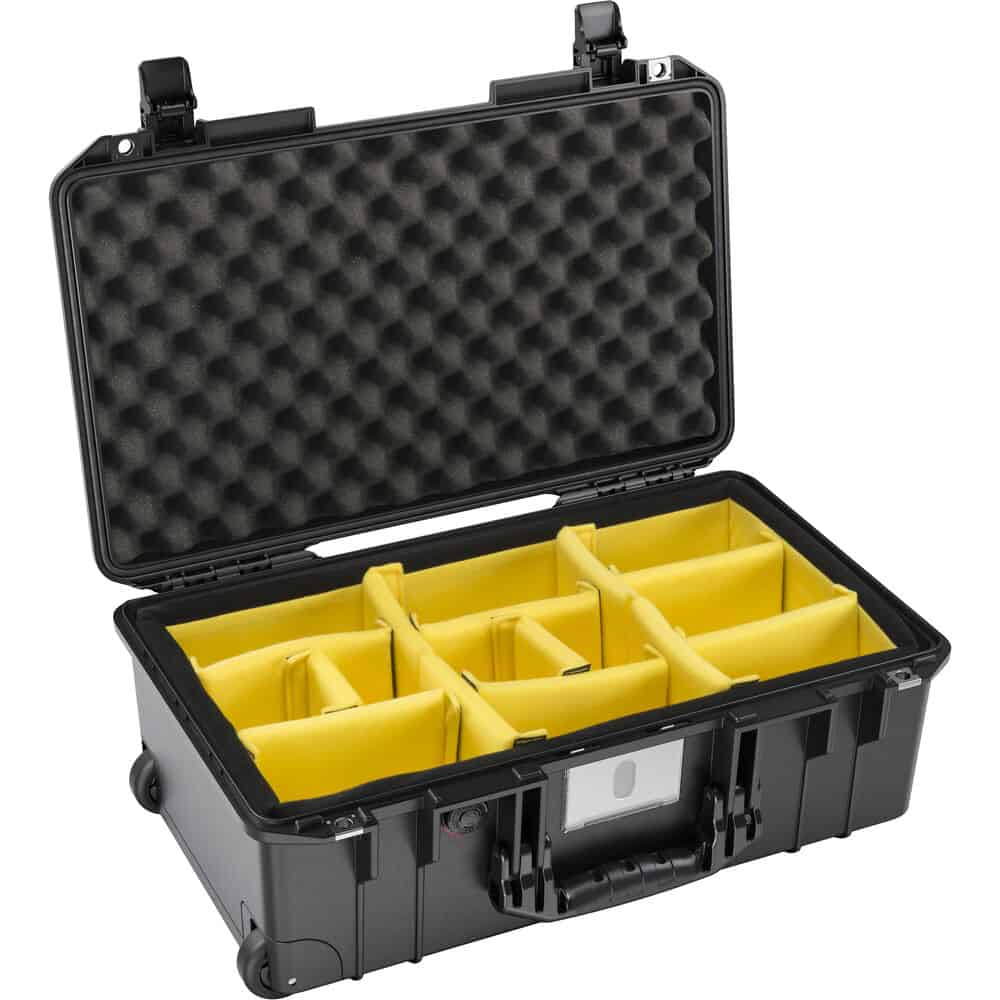
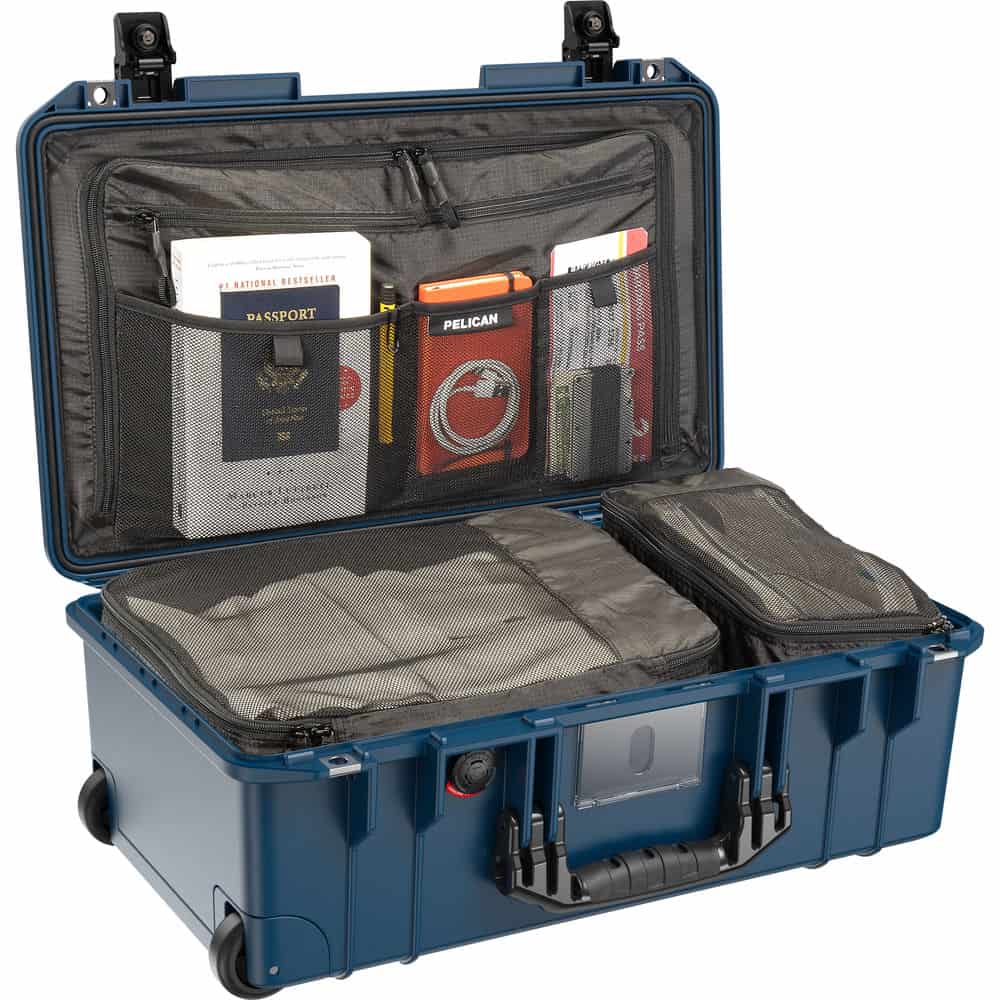
- Pelican 1535 Air “No Foam” – An empty case. Useful for storage of padded cases you might already own.
- Pelican 1535 Air “With Foam” – Pick and pluck foam allows at-home customization. My take: It’s a pain in the ass. Stay away!
- Pelican 1535 Air “Padded Divider” – Comes with an integrated padded camera case. A great option.
- Pelican 1535 Air “TrekPak” – Comes fitted with the TrekPak divider system. Also a great option.
- Pelican 1535 Air TRVL – I like this model for the zippered lid organizer and its built-in TSA locks. I use this model, take out the packing cubes for use in my duffel, and install a separately purchased padded divider kit.
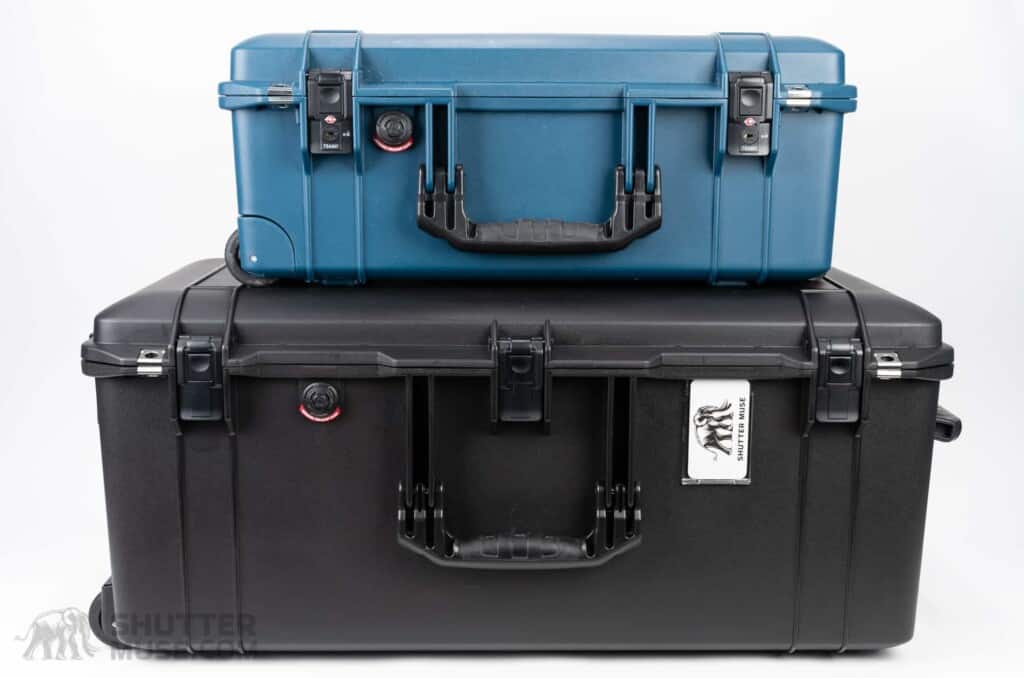
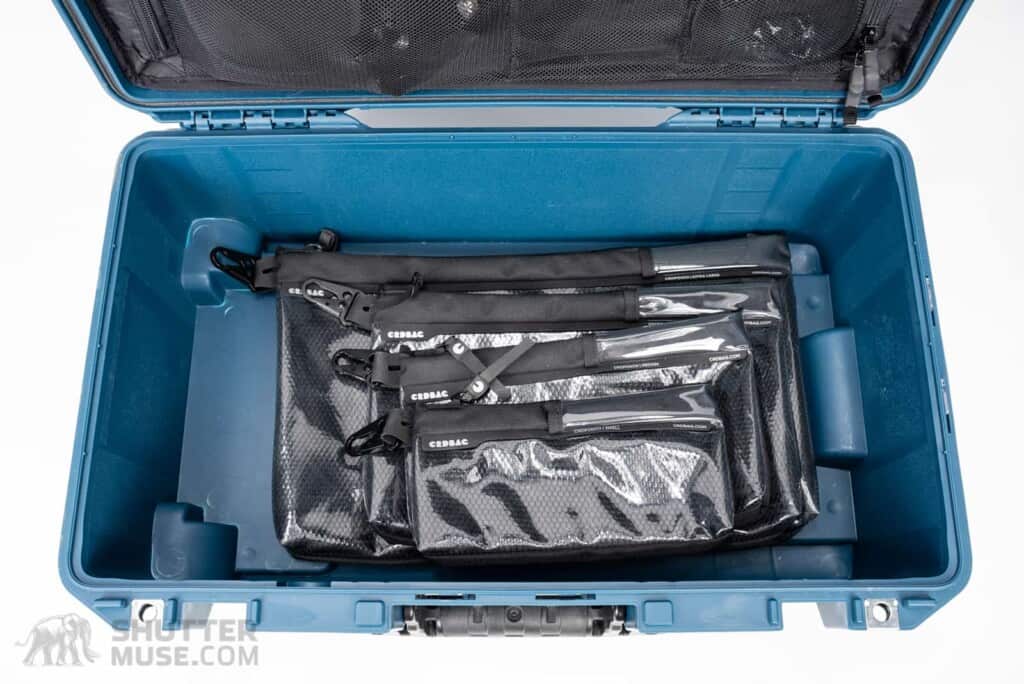
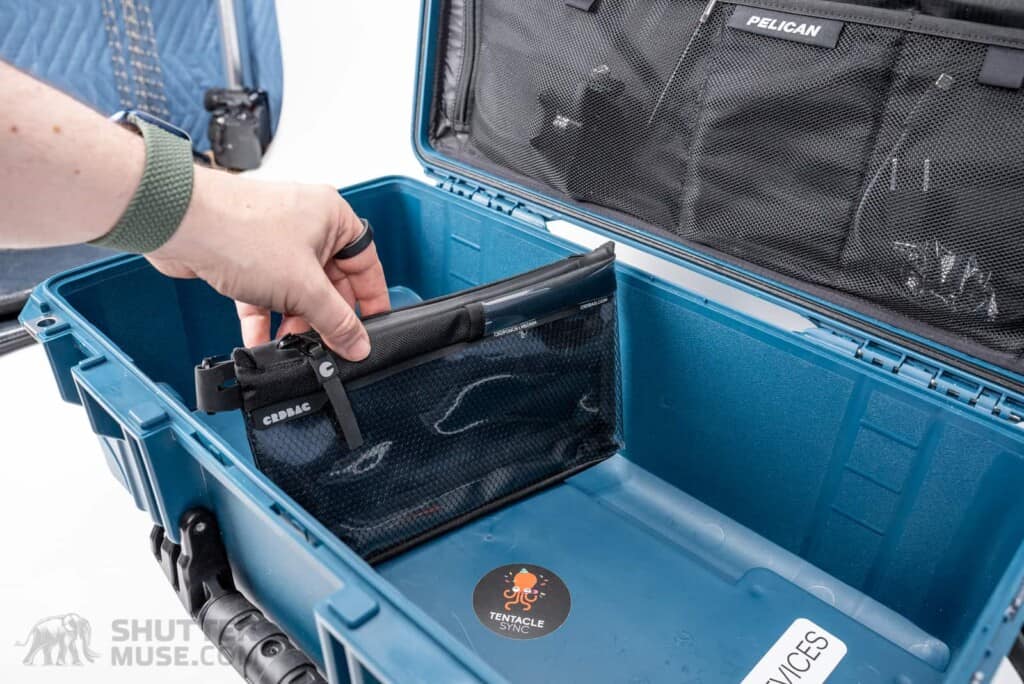
Best Pelican Case for Photographic Accessories
| Exterior Dimensions (L×W×D) | Interior Dimensions (L×W×D) | Weight | Price Check | |
|---|---|---|---|---|
| Pelican M40 | 6.80 x 5.00 x 2.60 in | 6.00 x 3.80 x 2.10 in | 0.65 lbs (0.3 kg) | Pelican / B&H / Amazon / Adorama |
| Pelican M50 | 8.10 x 5.50 x 2.90 in | 7.30 x 4.30 x 2.40 in | 0.85 lbs (0.4 kg) | Pelican / B&H / Amazon / Adorama |
| Pelican M60 | 9.30 x 6.00 x 3.20 in | 8.50 x 4.30 x 2.70 in | 1.05 lbs (0.5 kg) | Pelican / B&H / Amazon / Adorama |
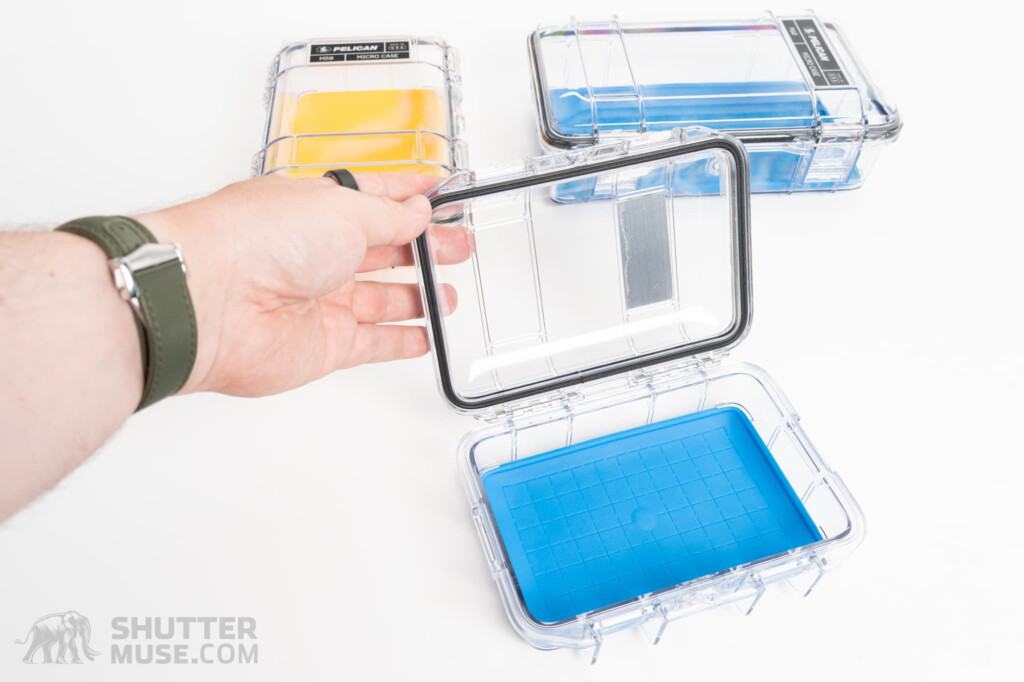
Pelican’s updated line of Micro cases is perfect for organizing smaller photography accessories such as tools, batteries, sensor cleaning products, memory cards, and charging cables. These Micro cases have an IP67 rating, meaning they can be submerged in 1m of water for up to 30 minutes. A rubber insert in the bottom of the cases helps to keep items in place, and the clear exterior helps identify the case contents if you have several in your kit. I bought all three sizes, M40, M50, and M60 to test them out and found them very useful to my gear organization.
Empty, Foam, Dividers or TrekPak – Which to Choose
Pelican cases are available in up to four different configurations, and I’ll discuss the pros and cons of each one in this section. While every Pelican case is available in the “Empty” or “Pick N Pluck Foam” configuration, not all cases are available with the “Padded Divider” and “TrekPak” configurations. If you decide that one of these two options is right for you, it might limit your choice of Pelican case. These options are available for all of the most popular Pelican cases, so they should not impact that many people’s choices.
Empty Configuration
Buying a pelican case in the Empty configuration is self-explanatory. There is no protection inside the case, just an empty shell. Remember, this also means that there is no foam in the lid of the case either. Empty case configurations are the cheapest, and they can still be useful for photographers who want to travel with a fully-loaded camera bag inside a hard case. They are also useful if you already own a selection of padded camera cubes such as F-Stop ICUs or Shimoda Core Units.
Pick N Pluck Foam
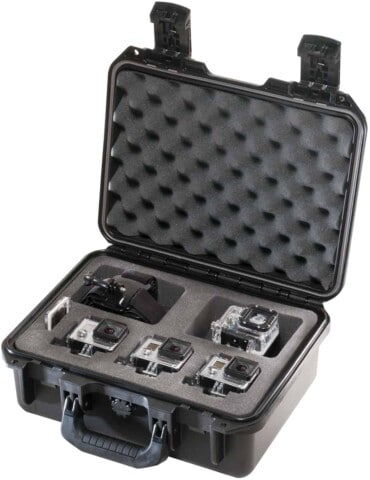

The Pick N Pluck foam configuration includes padding inside the lid and the special Pick N Pluck foam in the case’s main compartment. This foam contains minor cuts that allow you to pluck small cubes from the main volume to create a bespoke cutout to fit specific pieces of equipment. Plucking the foam is somewhat laborious, but the result is a custom fit that offers the most protection of any Pelican case configuration.
The downside is that your case is tailored to specific pieces of equipment. If you’re a photographer that often changes their gear, this isn’t going to be a great option for you. Of course, you can always pluck more foam, but you can never add it back again! Some stores will see you a fresh set of foam for your case, but it’s not as easy to get as the cases themselves, and it’s not a cost-effective option.
Padded Dividers
The padded divider option gives you the sort of configuration that most photographers are used to in a regular camera bag. The size of the camera and lens slots can be adjusted as often as necessary, and the bright yellow colour of Pelican’s padded dividers makes it easy to locate dark-coloured items. If you are constantly using your Pelican case to carry completely different loads, the Padded Divider option makes the most sense. Padded Dividers are also available as separate purchases. If you already own a Pelican case that was purchased with one of the other configuration options, you can choose to switch to the dividers at a later date.
TrekPak
The final option is called TrekPak. The Pelican TrekPak system is a customizable set of semi-hard foam dividers that can be cut to your required lengths to create a layout that suits your camera equipment. When you buy a TrekPak configuration, the Pelican Case comes with foam lid padding, foam base padding, a TrekPak “wall” that goes around the inside of the case, and a set of long TrekPak dividers that can be easily cut with the included cutting tool. The dividers are held in place with U-shaped metal pins.
The TrekPak system sits somewhere between Padded Dividers and Pick N Pluck foam in terms of how re-configurable it is. While you will want to initially cut the TrekPak dividers to suit a specific gear layout, I found that after doing this, I could still slide dividers around to different locations and reconfigure things for slightly longer or shorter lenses. It doesn’t offer the flexibility of the Padded Dividers, but it’s still a great option. Having tried this system in a Pelican 1535 Air as part of a review on this site, I can see myself using this option again in the future.
An Outside Option – Think Tank Logistics Manager 30 V2
Although most people are probably reading this article because they know that want a hard-sided Pelican case for their gear, I still wanted to mention this Think Tank alternative. As far as I’m concerned, it is the best non-Pelican option for maximizing protection and available storage volume while safely travelling with your photo gear. I know many photographers travel the world with their gear in these cases.
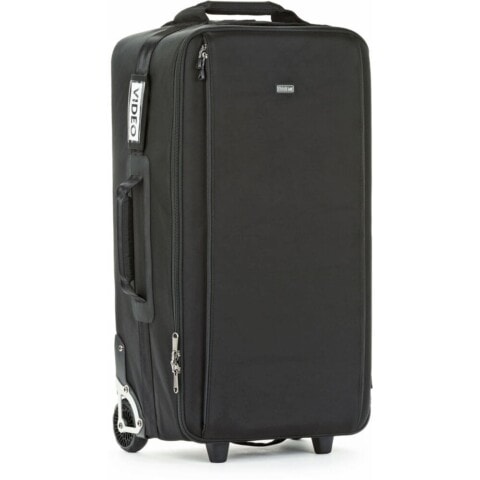


- External Dimensions: 15.8” W x 30” H x 12.6” D (40.1 x 76 x 32 cm)
- Internal Dimensions: 14” W x 27” H x 8.3–10” D (35.5 x 68.6 x 21–25 cm)
- Linear Dimension: 58.4 inches
- Weight: 16.9 lbs. (7.6 kg)
- Check Price: Think Tank / B&H Photo / Amazon / Adorama / WEX (UK)
US Customers spending over $50 in Think Tank Photo’s online store can get a free gift at checkout after following one of the links to the store from this review–like this one. If you have any issues, please follow the instructions on this page.
The hard-sided design of Pelican cases means that they offer the ultimate protection. However, the semi hard-sided Think Tank Photo Logistics Manager 30 V2 still provides enough protection for most uses. With a linear dimension of 58.4 inches, this case also sneaks in just under the maximum allowable size for a piece of checked luggage at most airlines.
I own a Logistics Manager and a Pelican 1626 AIR, so I can speak confidently to the differences. The Pelican case makes the most sense if I want to travel with large tripods and entire camera bags. I love being able to drop a bag into the Pelican case and close it up to know it’s all safe, whether that is in the trunk of my car or disappearing down the conveyor belt at the airport check-in desk.
On the other hand, the Logistics Manager 30 V2 is better for organizing camera gear that isn’t already packed into another bag or a series of small cases. Think Tank provides you with roughly 50 padded dividers to configure the case to your liking, and zippered pockets help to tame all of your smaller items.
At $499, there is very little difference between the price of the Logistics Manager 30 V2 and the price of the Pelican AIR cases we already discussed, so long as you compare the total price of the Pelican case and the optional padded insert. If you do not need the padded insert for the Pelican Case, the options become a cheaper alternative.











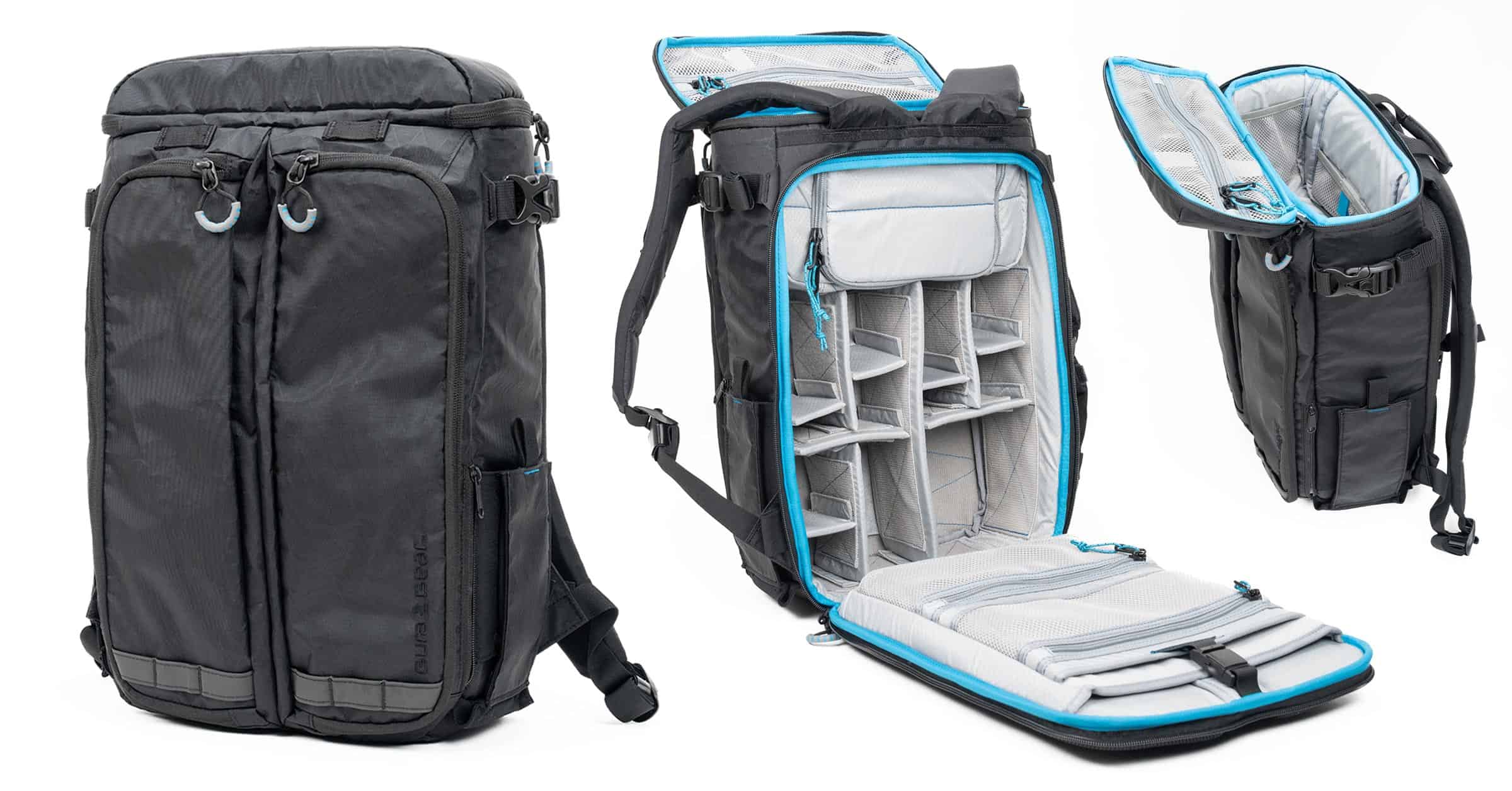
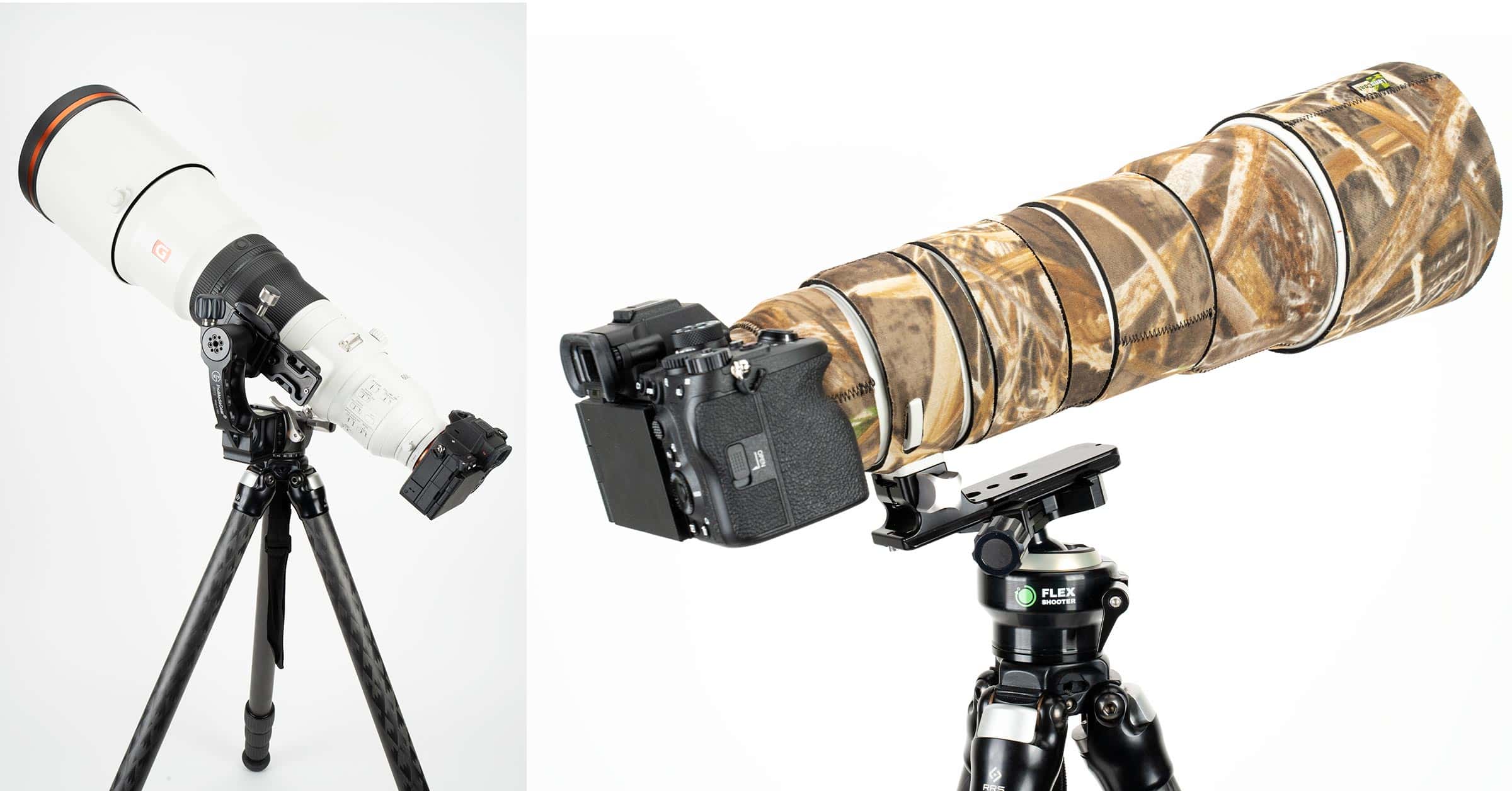

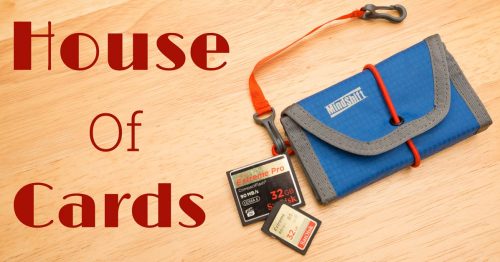
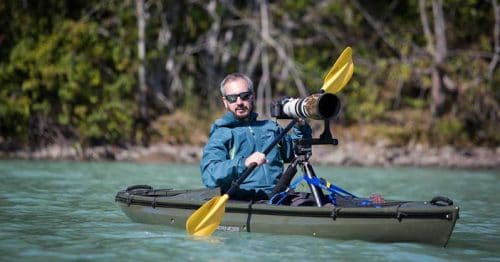
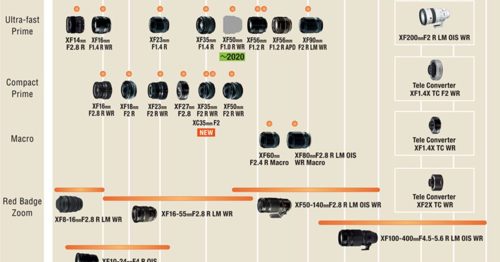

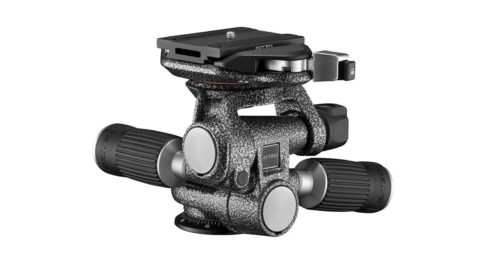
Hello,
I would like to ask: when you are traveling, do you put your camera body and lenses into a checked-in pelican case or do you always carry-on your sensitive equipment?
Personally, I would be afraid of those shocks from throwing my case by the airport crew, while loading a plane.
Thank you for sharing your experience,
Lubomir
I always fill a carry-on bag with as much camera equipment as possible. I usually use the Gura Gear Kiboko 30L+. However, sometimes (often), I have too much gear to fit into my carry-on, and that’s when I use these Pelican cases. In those situations, I always ensure I have the minimum amount of equipment to get the job done in my carry-on. If a checked case gets lost or damaged, I’ll always be able to do the work with what’s in my carry-on.
Thank you for explanation.
You’re very welcome.
Dan, Thanks for a most comprehensive Review.
Personally I have used the Peli Air 1535 for some time now, with the Trekpak dividers that I also think are extremely ‘fit for purpose’ and make a great combination, that have travelled widely with me.
WHAT IS MISSING FROM THE PELI RANGE is a ‘Lid Organiser’ for the ‘1535. HOWEVER, the Peli ‘1519 Organiser (for the ‘1510 case) DOES FIT INSIDE the ‘1535 lid, but does NOT have the same mounting hole positions! Using a piece of stout paper cut to the dimensions of the ‘1519, it is easy to trace the precise hole positions on the lid’s stand-off pillars, and to transfer these to the Organiser. It is then simple enough to drill 4 new holes in the Organiser, in PRECISELY the correct positions to align with the ‘1535 lid. Why Peli didn’t add automatically add these extra holes when they started production of the AIR 1535 is quite beyond my comprehension, as this ‘1519 Organiser VASTLY INCREASES the practicability, and USABLE STORAGE VOLUME of the Air 1535.
Hi – this article is super helpful, thanks! Like you, I’m interested in using a Pelican case to carry a Shimoda core unit. However, I’m looking for something carry-on compliant. I wonder, did you (or anyone reading this) test the Shimoda DSLR Large (v3) core unit inside the Pelican 1535 Air? Going from the specs provided by both brands, it seems the core unit is 6mm wider that the inside of the Pelican. That’s in the region of a rounding error, and I’m imagining it might squeeze in there just perfectly.. or not!! Thanks